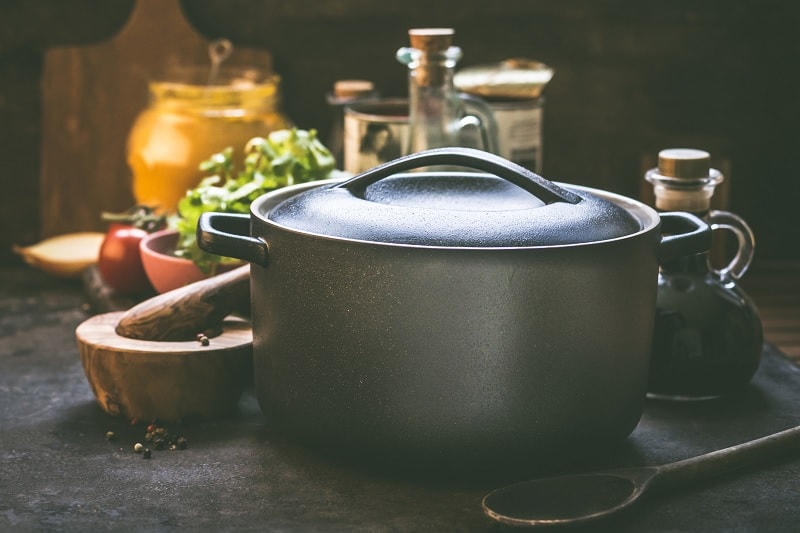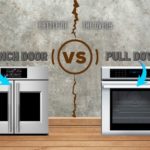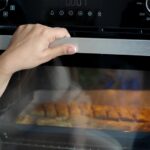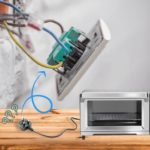If you’ve just bought your first stock pot and are excited about all the recipes you can make using it, you might have a few questions about how you can use it. One of the most important questions is whether your new shiny pot is oven-safe.
Can a Stock Pot Go in the Oven?
Stock pots are designed to go on the hob rather than the oven, so you should check that your stock pot is oven safe before putting it in the oven.
Stock pots that are made purely from stainless steel, cast iron and/or ceramic can go in the oven safely. However, stock pots that use a non-stick coating or have plastic handles should not be used in the oven unless they are labelled as oven safe.
Unfortunately, there’s no quick and easy rule for determining whether or not a stock pot is oven-safe.
The best tip I can offer is to check the info that came with your stock pot. There should be some info on the bottom of the stock pot too.
If you do want to use your stock pot in the oven, there are a few things that you can avoid to ensure that the stock pot is more likely to be oven safe.
Things like rubber gaskets and plastic handles will typically mean that the pot isn’t oven-safe. A completely stainless steel or copper stock pot, on the other hand, should be safe for the oven.
Can You Put a Stock Pot with Plastic Handles in the Oven?
While you’re not recommended to put a plastic-handled stock pot in the oven, it can be done. You just have to do something to reduce the risk of the plastic handle burning.
The easiest way to do this is to wrap the handle is wet paper towels and then baking foil.
Ensure the paper towel is damp enough that the water won’t evaporate straightaway and then cover the paper towel in foil and this should keep the handles safe during cooking.
Of course, if you are going to buy a stock pot for use in the oven, perhaps consider one without plastic handles as it just makes life easier.
What Kind of Stock Pots Can Go in the Oven?
Here’s a quick summary of everything we have covered in this article.
Oven-safe
- Stainless steel – Stainless-steel stock pots work brilliantly in the oven.
- Copper – Copper stock pots are also fantastic, although copper is a fantastic heat-sync so be careful to not burn your food.
- Cast iron – Cast iron is perfectly oven safe.
Not oven-safe
- Aluminium – Coatings can discolour and be bad for food and your health.
- Coated carbon steel – Coatings can discolour and be bad for food and your health.
- Plastic handles – Stock pots with plastic handles shouldn’t be put in the oven as the handles can melt. In some cases you can get away with putting these pots in the oven for short periods if you take care to protect the handles.
If you are looking for stock pot that is solely for use on the hob, aluminium and carbon steel are excellent choices. Stainless steel is probably your best bet if you want more versatility.
John Lewis have a list of oven-safe casserole dishes and stock pots here which is worth checking out if you’re looking for a new stock pot.

What Is a Stock Pot?
Just so that we’re all on the same page, a stock pot is designed for making stock. Of course, there’s loads of other uses for a stock pot. In fact, a stock pot is an extremely versatile pot.
Essentially, a stock pot is just a pot that is big enough to cover a whole chicken, some veg and have some room to spare for water.
You can use stock pots for all sorts of stuff. Common uses are boiling corn on the cob and for the extra fancy among us, boiling lobster too.
Stock Pot vs. Dutch Oven
A lot of us use stock pots as a replacement for soup pots and Dutch ovens.
Now, there’s nothing wrong with using a stock pot to replace other cookware and it can help a lot if you are short on storage space for your cookware.
Now, there are a few differences between Dutch ovens and stock pots that are worth knowing.
As stock pots are designed to hold a higher liquid content, the bases on these pots are typically thinner. This is so the heat from the hob is transferred quicker and so it takes less time for a stock pot to reach boiling point.
Dutch ovens, on the other hand, have a thicker base, as they are designed for slower cooking purposes. They look a lot like casserole dishes, but are deeper. Casserole dishes are shallower, and designed more for using in the oven.
When buying a stock pot, if you want the pot to be as versatile as possible, it is worth buying the stock pot that has the heaviest and best material you can afford. This can be aluminium, copper, stainless steel along with other options too.
That is a very brief look at stock pots and how they differ to other pots. This is by no means a buying guide for stock pots, but should give you a bit of help when using your new stock pot and help you understand what it was actually designed for.
Dutch ovens and casserole ovens are almost always oven safe, whereas stock pots aren’t always oven safe.
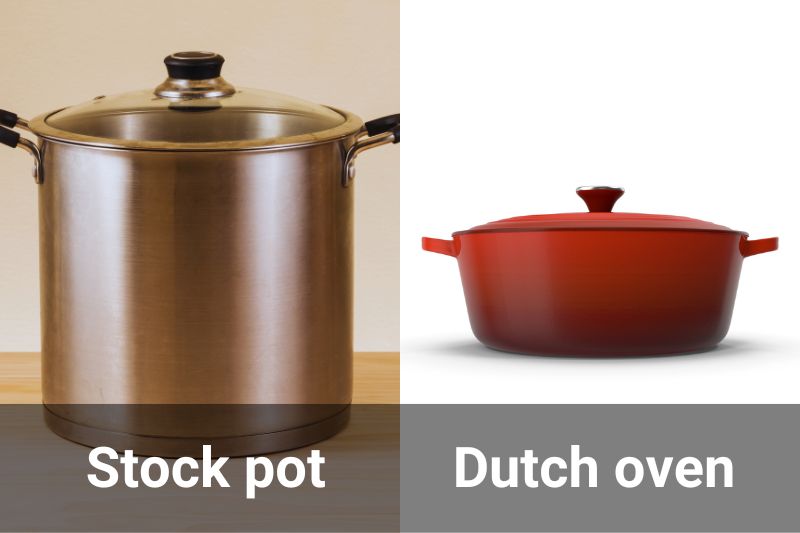
Conclusion
I hope this look at stock pots and which are safe for oven use has been helpful. Like many with many cookware questions, the answer depends on the exact materials your stock pot is made from.
If it contains any plastic or non-stick coatings, it probably won’t be oven safe. If it’s made from 100% stainless steel, ceramic or cast iron, it should be fine to put in the oven.
If you now fancy giving a stock pot a try in your oven, please explore or website further. We have even more info that will help you with your first stock pot adventure!

Scott is a writer and a passionate home chef. His passion for cooking began when he was 10 years old. Scott has been writing professionally for over five years now and loves to combine his passion for cooking with his day job.

